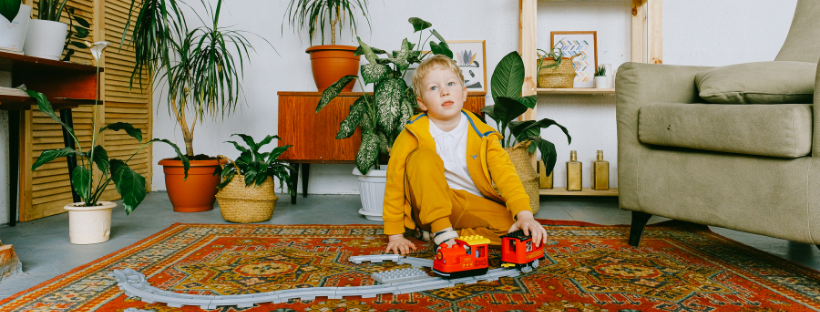
Play is the most important way of learning for children. Children practice and learn multiple skills during play, but how do children actually learn to play?
Stages of Play
Psychologist Jean Piaget (1896-1980) studied play and found out that even babies play - but in a different way than 5-year-olds. According to Piaget, children engage in types of play that reflect the level of their cognitive development. The stages of play are: Functional play, Constructive play, Fantasy play, and Games with rules (Johnson, Christie & Wardle 2005).
- Functional play
- using bodily movements
- playing with or without objects
- running, jumping, sliding, gathering, dumping
- manipulating or stacking objects
- playing informal games without rules
- Constructive play
- using objects like blocks, Legos or other materials (sand, clay, paint, blocks, snow ) in an organized, goal-oriented manner to make something
- Fantasy play
- role playing or make-believe playing
- pretending to be eg. a mother, superhero, dinosaur or Peppa Pig
- make believe actions, such as driving a car by moving a pretend steering wheel or imagining a cardboard box as a castle
- Games with rules
- games with peers
- games are controlled by pre-established rules
- games such as tag or hide&seek
How can children learn by playing in Finland?
Which type of play is the most valuable one?
As children grow older, the way they play evolves. Piaget viewed the forms of play as progressive, beginning with functional play (a baby playing with a rattle) and later progressing to more complex games with rules.
Nevertheless, one of the stages of play remains important, even the child's cognitive skills would allow him/her to move to the next stage.
According to Francis Wardle (2015), PhD in child development and early education, early childhood educators continually have to justify the use of play in the curriculum. Often this justification is that play prepares children for later academic, social, and emotional successes (Leong & Bodrova 2015).
But, while constructive play teaches children to be flexible thinkers (Bruner 1972), and develops a sense of control and self-esteem by encouraging children to control their environment (Chaille 2008), Wardle believes the main value of constructive play is that it enables children to be children: to do what children need to do and want to do!
I believe the main value of constructive play is that it enables children to be children: to do what children need to do and want to do!
- Francis Wardle
Children love constructive play
Even research shows that when given a choice of free play activities, preschool children choose constructive play more than 50% of the time (Rubin, Fein, & Vandenberg 1983). Constructive play was also preschool children's favorite outdoor activity (Ihn 1998).
Assess children's learning with Kindiedays
Furthermore, constructive play is also great for those children who may not be quite ready to move on to the final stage on fantasy play. For example children with delayed language or social development enjoy constructive play greatly as they get to manipulate their environment with objects.
Happy playtime!
.png)
References
Wardle, F. (2015). The importance of constructive play. Read 20.7.2021.
We have received great praise from the parents, which has empowered our staff to continue developing our family engagement, collaboration, as well as the early childhood education we provide.
- Emilia Patro Lorentz, New Nordic School
.png)